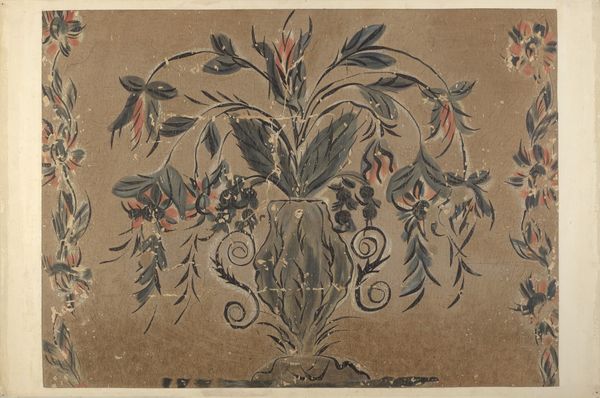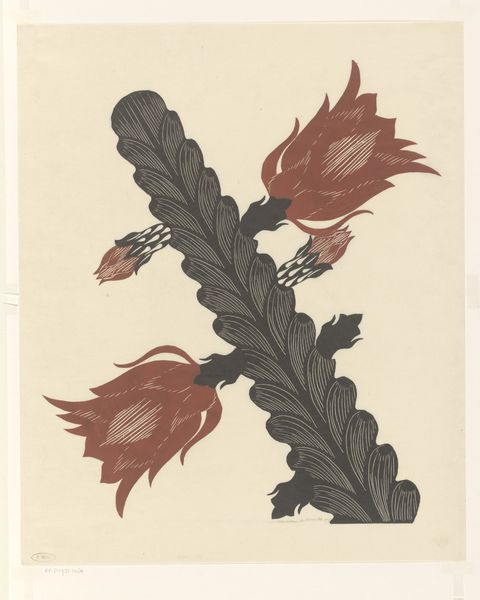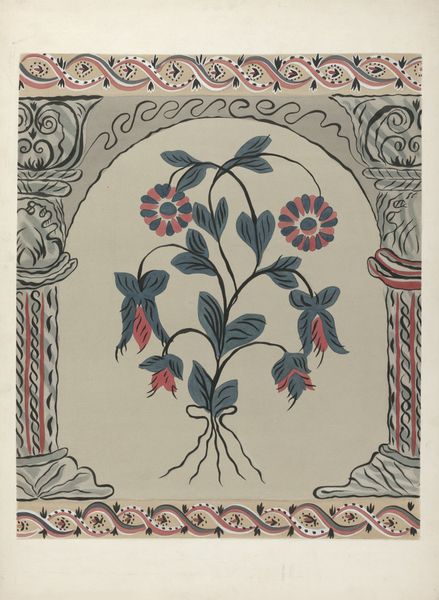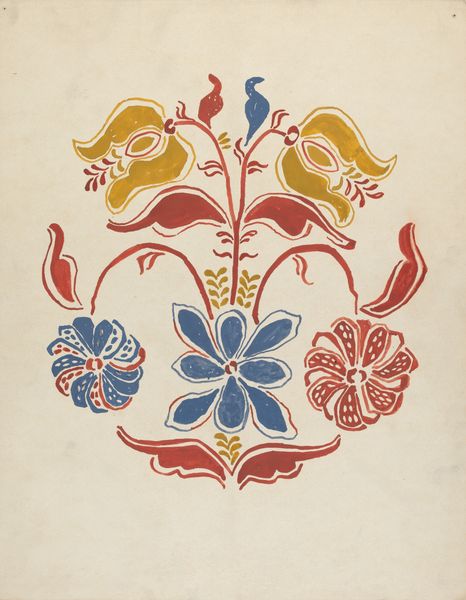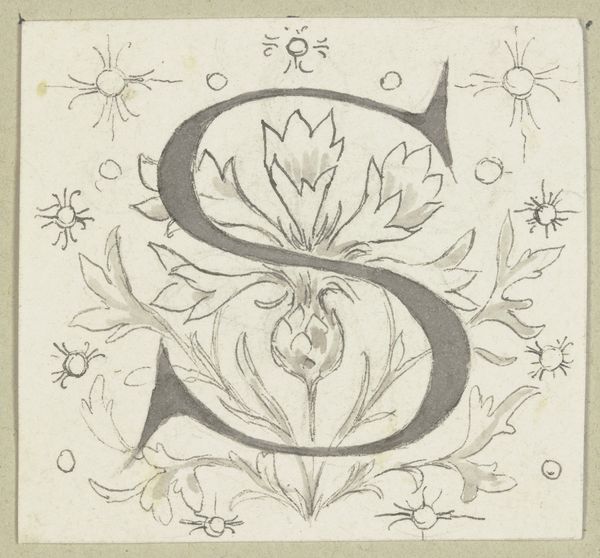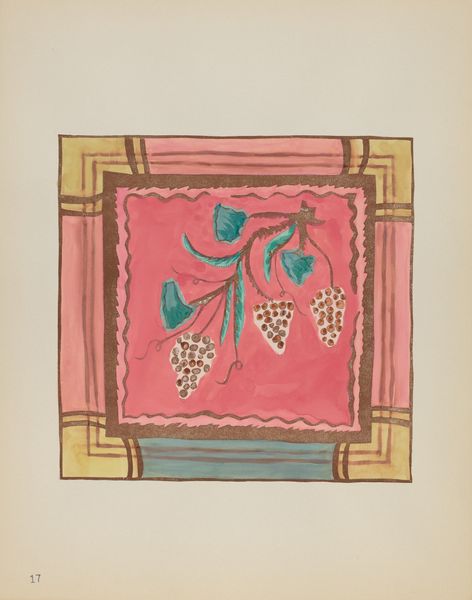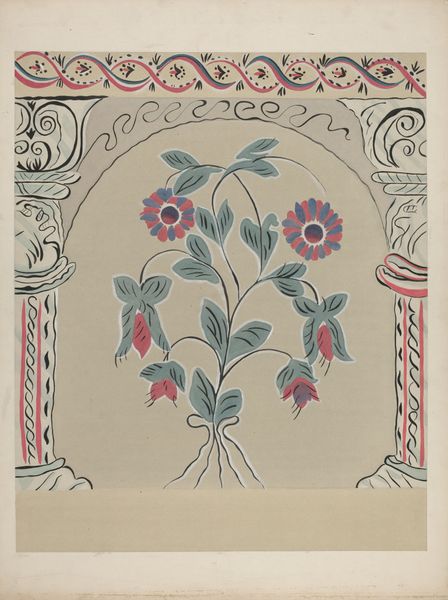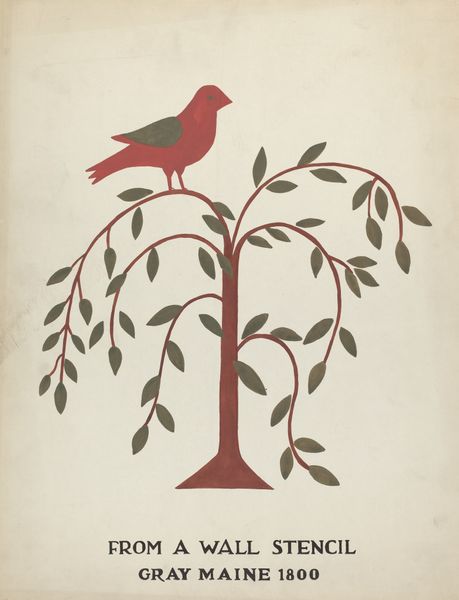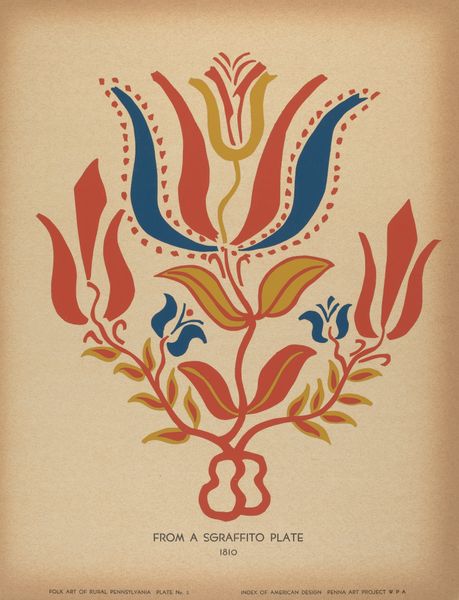
drawing, tempera
#
art-deco
#
drawing
#
tempera
#
pattern
#
decorative-art
Dimensions: overall: 54.2 x 73 cm (21 5/16 x 28 3/4 in.)
Copyright: National Gallery of Art: CC0 1.0
Editor: This piece is called "Hand Painted Wall," created around 1939 using tempera, and classified as a drawing. There's something really charming and old-fashioned about its decorative floral patterns. What exactly makes a piece like this significant from your point of view? Curator: Given its likely origin as a design for wallpaper or textiles, it's significant as a reflection of the aspirations of everyday life during the late 1930s. We see an echo of Art Deco elegance, softened by the burgeoning floral patterns that offered a promise of beauty. Editor: So it’s less about high art and more about how people wanted their homes to look? Curator: Precisely! This work allows us to examine the intersection of art and industry, the drive to bring aesthetic appeal to the masses, and to improve daily life. Tempera, a relatively accessible medium, reinforces that aim. The decorative arts held tremendous cultural power. Editor: I guess I never really considered how intentionally things like wallpaper were designed. It speaks volumes about social history, really. Curator: Absolutely. The image suggests a shift in social priorities towards affordable, mass-produced elegance, reflecting the influence of institutions championing applied arts and the public role of art in shaping taste. It raises questions about access to beauty, then and now. What do you make of the restricted palette? Editor: Now that you point it out, the limited colors probably helped make it cheaper to produce, allowing for larger-scale production and accessibility. So clever. Curator: Indeed. Examining 'Hand Painted Wall' unveils a deeper narrative concerning democratic ideals of design and how art infiltrates daily life, even in seemingly modest forms. Editor: I see this simple decorative art in a new, historically informed light now. Thank you! Curator: It's been enlightening exploring how even decorative pieces contribute to art’s broader public function and reveal something about societal aspirations.
Comments
No comments
Be the first to comment and join the conversation on the ultimate creative platform.
